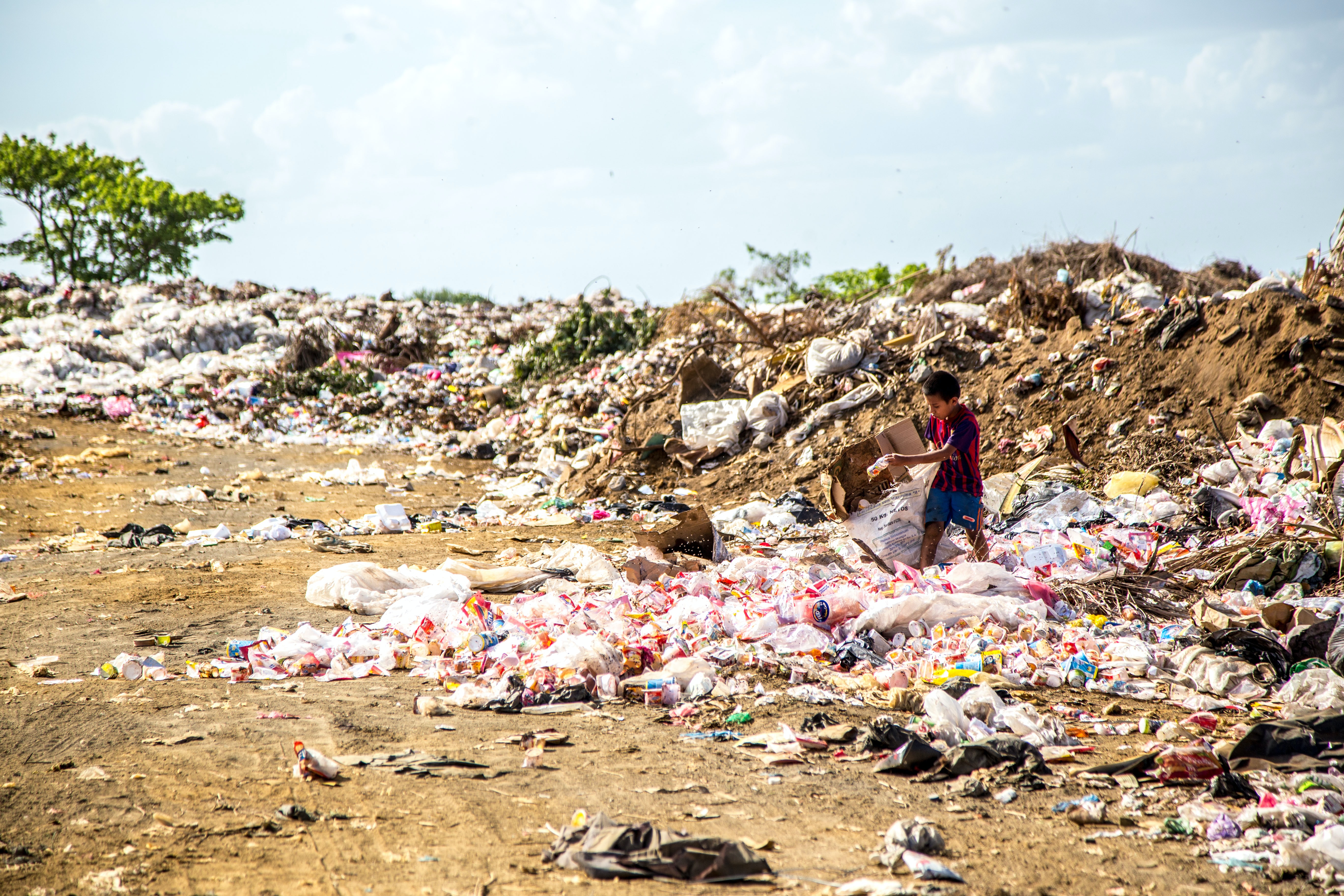Ensure sustainable consumption and production patterns

Consumption and production drive the global economy, but also wreak havoc on planetary health through the unsustainable use of natural resources. The global material footprint is increasing faster than population growth and economic output. Improvements in resource efficiency in some countries are offset by increases in material intensity in others. Fossil fuel subsidies remain a serious concern. An unacceptably high proportion of food is lost along the supply chain. And waste, including additional medical waste generated during the pandemic, is mounting. The pandemic offers an opportunity to develop recovery plans that will reverse current trends and shift our consumption and production patterns to a more sustainable course. A successful transition will mean improvements in resource efficiency, consideration of the entire life cycle of economic activities, and active engagement in multilateral environmental agreements.
The world continues on a path of using natural resources
The world's reliance on natural resources has continued to accelerate over the last two decades. One measurement of this reliance is the material footprint: the amount of primary materials required to meet basic needs for food, clothing, water, shelter, infrastructure and other aspects of life. It is an indicator of the pressure put on the environment to support economic growth and to satisfy the material needs of people. The global material footprint grew from 73.2 billion metric tons in 2010 to 85.9 billion metric tons in 2017, a 17.4 per cent increase. The footprint expanded for all types of materials, but especially for non-metallic minerals (which accounted for almost half of the global footprint), pointing to growth in the areas of infrastructure and construction. In 2015, the material footprint per capita in high-income countries was over 10 times larger than in low-income countries. Urgent action is needed to decrease our reliance on raw materials and increase recycling and “circular economy” approaches to reduce environmental pressure and impact.
Material footprint by type of material, 2010 and 2017 (billions of metric tons)
Growth in the generation of electronic waste far outpaces its rate of recycling
The disposal of electronic and electrical equipment has become a fast-growing waste stream, driven by growing consumption, short product life cycles and limited repair. Such e-waste contains both valuable and hazardous materials. From 2010 to 2019, e-waste generated globally grew from 5.3 to 7.3 kilograms per capita annually. Meanwhile, the environmentally sound recycling of e-waste increased at a much slower pace – from 0.8 to 1.3 kilograms per capita annually.
In high-income regions, an e-waste management infrastructure exists. However, collection rates are, on average, substantially below 50 per cent. E-waste materials are often categorized as reusable goods and can also be exported to middle- and low-income countries. But in many of those countries, infrastructure is not yet developed or is inadequate to manage locally generated and illegally imported e-waste. The waste is mostly handled by the informal sector through open burning or acid baths, both of which pollute the environment and result in the loss of valuable and scarce resources. Moreover, workers and their children, who live, work and play on those sites, often suffer severe health effects.
E-waste generated and recycled, 2010 and 2019 (kilograms per capita)
* Excluding Australia and New Zealand.
A significant proportion of food is lost along the supply chain before it reaches the consumer
Reducing food loss and waste can contribute to environmental sustainability by lowering production costs and increasing the efficiency of food systems. At the same time, it can improve food security and nutrition. While it is not yet possible to estimate the percentage of food waste at the retail and consumption stage, the percentage of food lost after harvesting and during transport, storage and processing stands at 13.8 per cent globally, amounting to over $400 billion a year. Regional estimates suggest that the highest level of food loss occurs in Central and Southern Asia (20.7 per cent), followed by Europe and Northern America (15.7 per cent). Australia and New Zealand register the lowest food losses (5.8 per cent). Countries need to implement targeted interventions at critical stages of the value chain to reduce unnecessary food loss and waste.
Proportion of food lost, 2016 (percentage)
* Excluding Australia and New Zealand.
Despite the growing urgency of the climate crisis, Governments are still subsidizing the fossil fuel industry
Fossil fuel subsidies are creating irreparable harm by incentivizing activities that produce large amounts of greenhouse gas emissions. The adverse consequences include air pollution and global warming. Fossil fuel subsidies may also be contributing to COVID-19 mortality rates, based on the link between air pollution, respiratory illnesses and the severity of COVID-19 infections. Fossil fuel subsidies globally rose to over $400 billion in 2018, approaching 2014 levels, but fell by around 27 per cent in 2019, mostly due to a decline in fuel prices.
Subsidies for oil, gas and fossil-fuelled electricity will likely further decrease in 2020 due to weak demand. However, the continued prevalence of these subsidies is counterproductive to the global goal of achieving an early peak in greenhouse gas emissions. Especially at a time when many Governments need resources to finance large-scale COVID-19 relief and recovery measures, fossil fuel subsidy reform could be a valuable instrument in the policy toolkit for re-allocating scarce public resources.
Fossil fuel subsidies, 2010 to 2019 (billions of constant 2019 dollars)
Countries now need to operationalize the principles of sustainable economic growth
Advances in sustainable consumption and production spur progress in all the SDGs. From 2017 to 2019, 79 countries and the European Union reported on at least one national policy instrument that contributed to the implementation of the 10-Year Framework of Programmes on Sustainable Consumption and Production. Of the reported policy instruments, 70 per cent are seen as relevant to the SDGs with strong economic objectives (such as SDGs 8 and 9). Paradoxically, economic and financial instruments represent only 10 per cent of all policies reported in 2019, which reflects a limited operationalization of the vision outlined in the 10-Year Framework. Of all the policies that have quantified targets, 40 per cent are aimed at reducing greenhouse gas emissions.
The commitment of countries to join forces to create a sustainable and resource-efficient economy is clear – including through multilateral cooperation to accelerate behavioural change across trade flows and value chains, the alignment of ambitious national policies, and the eventual generation of benefits for all. Science-based evidence on sustainable consumption and production and data on policy impacts are crucial to ensuring effective action.
Businesses must address gaps in the quality of sustainability reporting
Sustainability reporting has been used by an increasing number of companies to demonstrate their commitment to the 2030 Agenda for Sustainable Development. A several initiatives have been launched to develop an agreed-upon and harmonized set of indicators for consistent and comparable sustainability reporting. Since 2017, the overall quality of sustainability reports has improved around the world. The share of reporting in the environmental, social, and institutional and governance dimensions that is aligned with the minimum requirements outlined in SDG indicator 12.6.1 (the number of companies publishing sustainability reports) has almost doubled. However, in many of the companies' reports, certain critical aspects of environmental, social and governance domains were hardly mentioned. These include water use, waste and emissions, gender equality, training on anti-corruption issues, and expenditures on employee health and safety. Large disparities were also observed across countries and regions. In Eastern Asia, Latin America and the Caribbean, and Europe and Northern America, firms demonstrated a higher level of reporting of baseline data that fulfilled the minimum requirements. Large gaps in reporting are evident in other regions, especially in Africa, Central Asia and Oceania.

